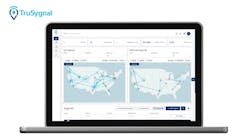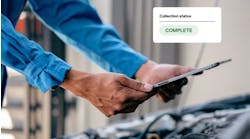Today in e-commerce, customers expect a shorter turnaround time after they buy, and most are accustomed to and want free shipping. Shorter order processing time is key in making that work, and Deutsche Post DHL Group is using everything from helper robots to routing apps of a sort to cut down the time it takes to pack a shipment at the warehouse.
As opposed to fine-tuning the actual trucking, consider this the other end of logistics operations to improve, particularly when it comes to e-commerce. But it's not hard to imagine other applications of these technologies.
DHL is looking to expand its "end-to-end" e-commerce services, going far beyond package delivery and related logistics. The company offers inventory and returns management in warehouse locations, among other services, and some technologies in use in its warehousing business include:
Locus Robotics - Wheeled bin-carrying robots take lists of items that need to be added to shipments, optimize their route around the warehouse to get those items, and whisk themselves off to each one. It takes much of the legwork out of the equation for pickers, who get an image of items needed displayed on an iPad and can scan them in by barcode.
The autonomous Locus helper robots have led to a reduction in order cycle time of 50% and new employee training time of 80%. Faster order processing time is critical in being able to serve customers as quickly as possible, noted Ilaria Raniero, a senior supply chain analyst at DHL, and so is the faster training. "When it's peak season, you want to be able to support higher volume right away by training employees quicker," she said.
Sawyer - Rather than traditional industrial robots that were always kept apart from workers, a collaborative robot like Rethink Robotics' Sawyer is designed to interact with and learn from humans. It's also smaller to be able to fit in more places.
DHL has deployed Sawyer in about 10 of its North American facilities and is testing out its best uses. That includes "kitting" — sorting together groups of items sold in kits — and co-packing along with picker employees. The robot has also proven handy in ad-hoc repetitive packing jobs that may come up or using its camera for visual inspection of items.
Vision Picking - Also helping reduce new employee training time and streamline the order-packing process, Vision Picking in use by DHL employs an augmented reality smart-glasses-type technology. It directs the picker where to go, optimizing routes through the warehouse, to get items needed to pack shipments.
The picker can scan each item using the smart glasses' camera, verifying that the item has been added. While efficiency gains from Vision Picking have been somewhat elusive so far, the technology has produced gains in the low double digits and is being tested in different capacities.
Box It Up - Items in a warehouse or fulfillment center all have info on size and dimension, and as orders come in, arranging those items in the smallest box necessary to ship them securely matters more than you might think.
Not only does it reduce shipping weight as much as possible, it makes for smaller packages, meaning that more orders can fit on a truck. DHL's Box It Up software helps warehouse pickers choose exactly the right size box to pack an order.
Group Smart - How do you reduce order cycle time as much as possible? You've got to carve out any excess time in the warehouse you can find.
DHL's Group Smart software automatically takes orders that need to be packed and groups them for pickers to shorten the distance between bins for pickers to travel, thus cutting processing time. It's a kind of routing software — instead of walking up and down, up and down warehouse aisle after warehouse aisle, Group Smart creates a better path for the picker to minimize distance and time spent in packing.
Check out our slideshow for a look at each of these technologies.


